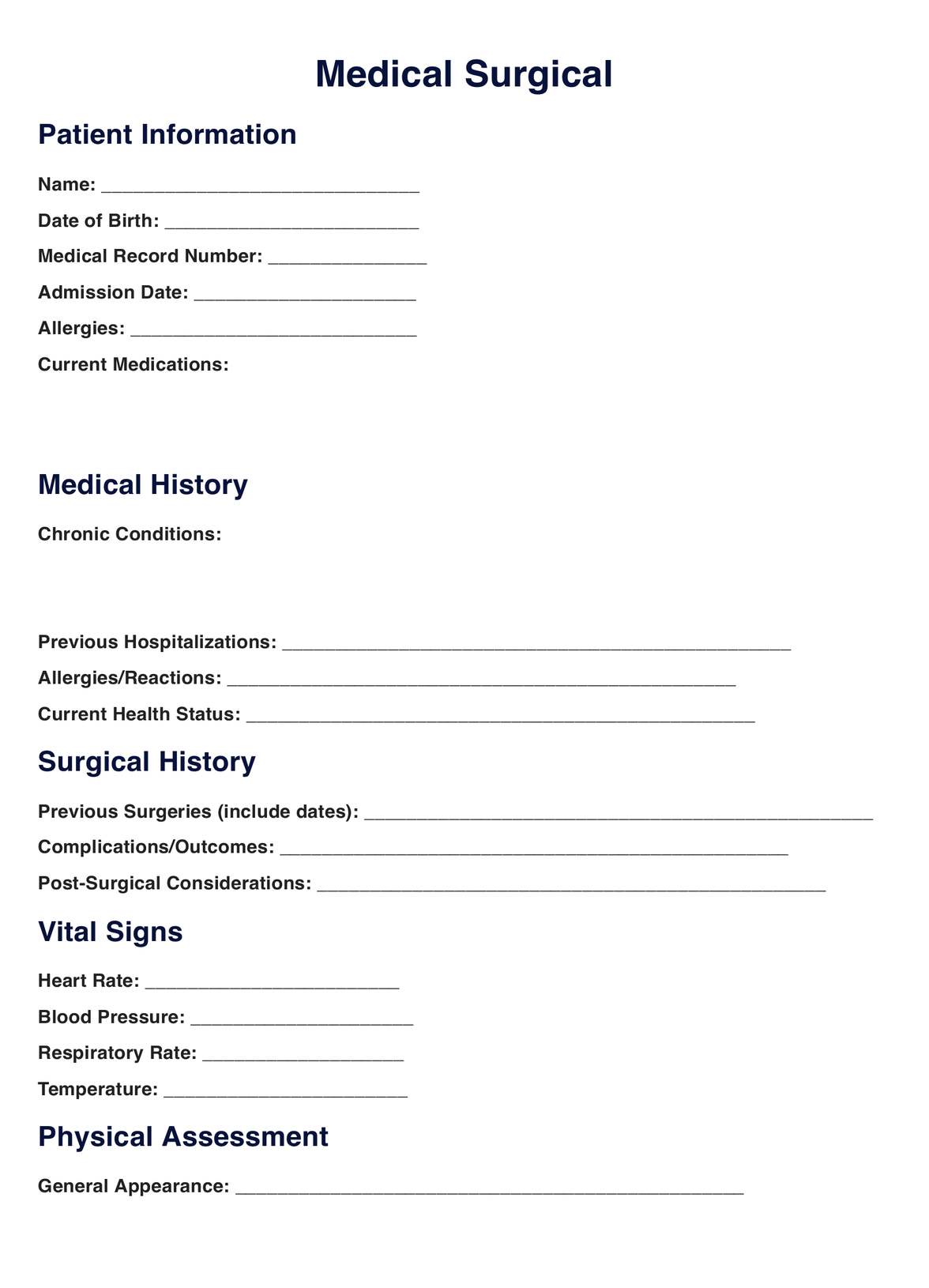Use our intuitive drag-and-drop tools on the Carepatron platform to create a template. Design customized forms efficiently without coding experience or technical training.

Med Surg
Optimize patient care with our Med Surg Templates. Streamline documentation, enhance communication, and ensure consistency in medical-surgical settings.
Use Template
Med Surg Template
Commonly asked questions
Templates are used during patient admission and ongoing care. They provide a structured framework for recording vital signs, medical history, surgical information, and nursing care plans.
Healthcare professionals, including nurses, physicians, and administrators, can create Templates. Carepatron's user-friendly tools enable easy customization to suit specific needs.
EHR and practice management software
Get started for free
*No credit card required
Free
$0/usd
Unlimited clients
Telehealth
1GB of storage
Client portal text
Automated billing and online payments











